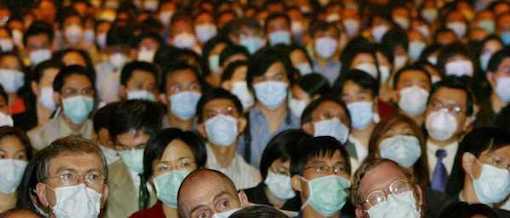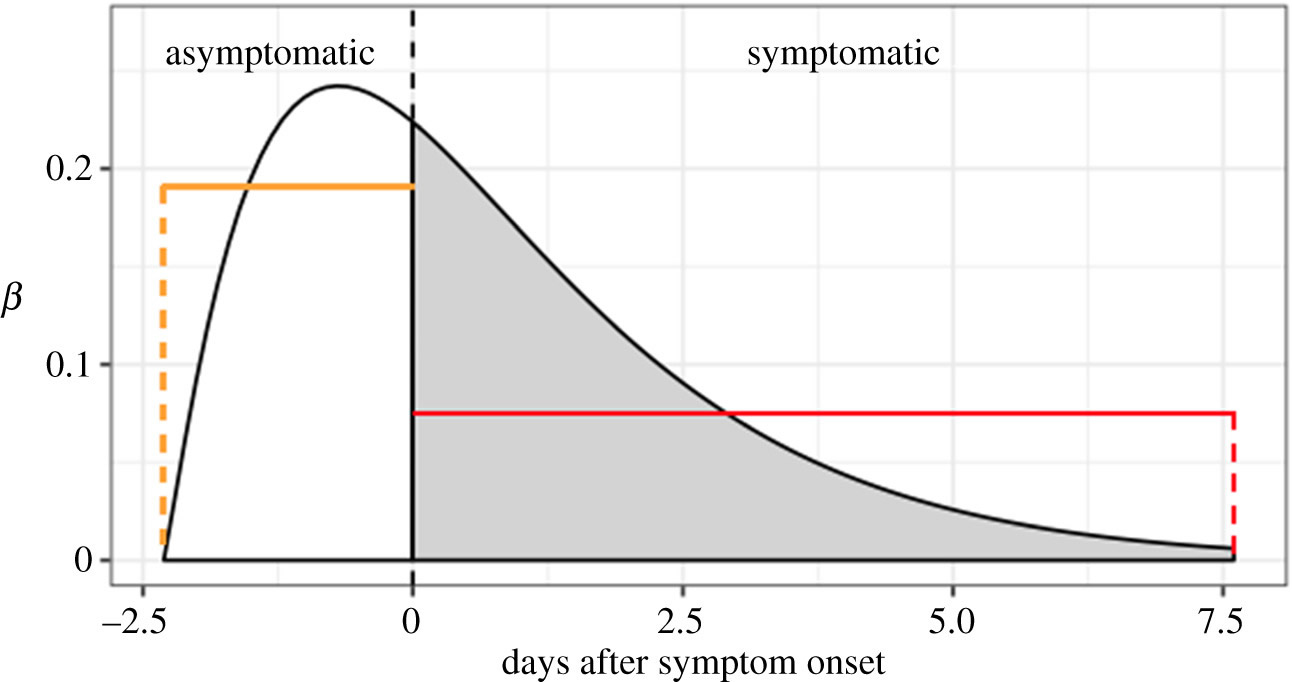
Charles Dobson

Evidence suggests the pandemic can be held in check if people wear well-fitted 3 layer masks when near others. Masking will be effective in all but a few places, such as gyms, bars and restaurants. Mandatory masking would eliminate destructive lock-downs, permitting the normal operation of schools, businesses and the other elements of everyday life.
The COVID-19 virus is transmitted in tiny droplets sent into the air when people talk, and exhale. Loud talking and heavy breathing through the mouth emit more droplets. Joggers and puffing people in gyms emit even more. Because the smallest droplets may float in the air for up to half an hour, social distancing by itself will be ineffective in enclosed spaces with poor ventilation. For more info see this video report on research from Japan and a report in the journal Science. Masks are necessary indoors, when near others. They are usually unnecessary outdoors, where transmission is 18 times less likely, except for large close-packed gatherings. Still, there remain some questions about masks because they don't seem to work in the community even though they work in the lab. Masks alone may not be sufficient. The addition of face shields that protect the eyes has been shown to provide much improved protection for front-line health workers.
Infected people with no symptoms can shed large amounts of virus. In fact, as reported in Nature, infected persons may be most capable of spreading the virus 1-2 days before showing any symptoms.
The graph below comes from a study on face masks reported in the June 10, 2020 edition of the Proceedings of the Royal Society.

The study concludes: In summary, our modeling analyses provide support for the immediate, universal adoption of face masks by the public . . .
A September 2020 report in Nature estimates that 40% of transmissions are from people who are asymptomatic.
The COVID-19 virus, like all RNA viruses, often mutates when making copies of itself. For a creepy animation of the rise of coronavirus variants play the map on nextstrain.org. Mutations will continue to arise until rich countries provide enough vaccines to poor countries where most of the population remains unvaccinated.
Medical procedure masks (typically blue, 3-layer, non-woven, pleated) help to prevent transmission. But they are far from perfect. Most blue medical procedure masks with ear loops leak through gaps at the nose and puckers at the sides. TV news stories endlessly show citizens, doctors and public health officials wearing sieve-like cloth masks or procedure masks that do not fit properly.
Most N95 masks do not pucker at the sides, and fit better around the nose. Health authorities should make these or well-fitted procedure masks mandatory for all indoor public spaces and all large outdoor gatherings. Cloth masks and valve masks should be banned. Epidemiologists say that 3-layer masks should not be worn continuously but only when necessary; some are far more breathable than others. Masks can be disinfected and reused by allowing them to dry 48 hours. Sunshine also kills the virus. Washing, and spraying with alcohol or bleach degrade the mask.
Taiwan, a country of 23 million, has performed better than any other country with only 7 Covid-19 deaths as of June 22, 2020. It did not shut down its economy, like less-prepared countries. Instead, according to president Tsai Ing-Wen:
“Upon the discovery of the first infected person in Taiwan on January 21, we undertook rigorous investigative efforts to track travel and contact history for every patient, helping to isolate and contain the contagion before a mass community outbreak was possible. In addition, government . . . took over the production and distribution of medical-grade masks. and devised a system for distributing rationed masks to everyone.” On October 29, 2020, Taiwan reported having no domestic COVID-19 infections in 200 days.
The Centre for Global Development has questioned why policymakers rely on lock-downs and physical-distancing to control a viral epidemic. Physical-distancing is not an option for lower income people, who cannot stay at home because they need to go to work. It may be impossible in many places, in densely populated cities, slums, prisons, churches, schools, public transit, meat packing plants, and elder care facilities. Government insistence on physical distancing has created an immense socioeconomic crisis in many counties. In India, where the government has asked 1.3 billion people to stay home for three weeks, literally millions have been left stranded, homeless, without work, and potentially going hungry.
A full-blown pandemic can easily out-pace the hesitant measures put into place by governments. Policymakers need to figure out how to sideline cautious bureaucrats in favor of creative problem solvers who can quickly assess and respond to a constant flow of new research. There is no excuse for governments to ignore quick, cheap self-administered antigen tests to screen for infection.
COVID-19 news in the mainstream media is weak, repetitive and out-of-date. If you want to know what is really going on, visit MedicalXpress.
The Citizen's Handbook / Home / Table of Contents
The Citizen's Handbook / Charles Dobson / citizenshandbook.org

The Troublemaker's Teaparty is a print version of The Citizen's Handbook published in 2003. It contains all of The Handbook plus additional material on preventing grassroots rot, strategic action, direct action and media advocacy. You can get a copy of The Teaparty from bookstores, Amazon or New Society Publishers.